A feature many people have been excitedly waiting on is custom Microsoft Teams background images and effects. This feature allows people to replace their background with a fun image; it’s usually a great way to show off some personality and a great conversation starter in a meeting.
Microsoft Teams includes some default backgrounds, but people quickly figured out how to upload their own images. Allowing users to upload images can cause some heartburn with system administrators and human resources as people can always ruin something fun by uploading inappropriate backgrounds. Initially, Microsoft Teams background images released without any administrator controls, but administratos can now control which Teams background effects are available to users.
In this post, you’ll learn where Microsoft Teams stores background images and how to configure meeting policies to control the end user behavior.
Staging Custom Microsoft Teams Background Images
First, I need some images to use as my custom Teams backgrounds. I love visiting national parks and have taken some pretty good landscape pictures, and I want to use these during meetings. You can add custom Microsoft Teams background images in two different ways.
If you are using a Windows desktop, you can navigate to:
%AppData%\Microsoft\Teams\Backgrounds\Uploads
And copy some images into this folder. Here are my 8 landscape pictures I want to use as my custom backgrounds.
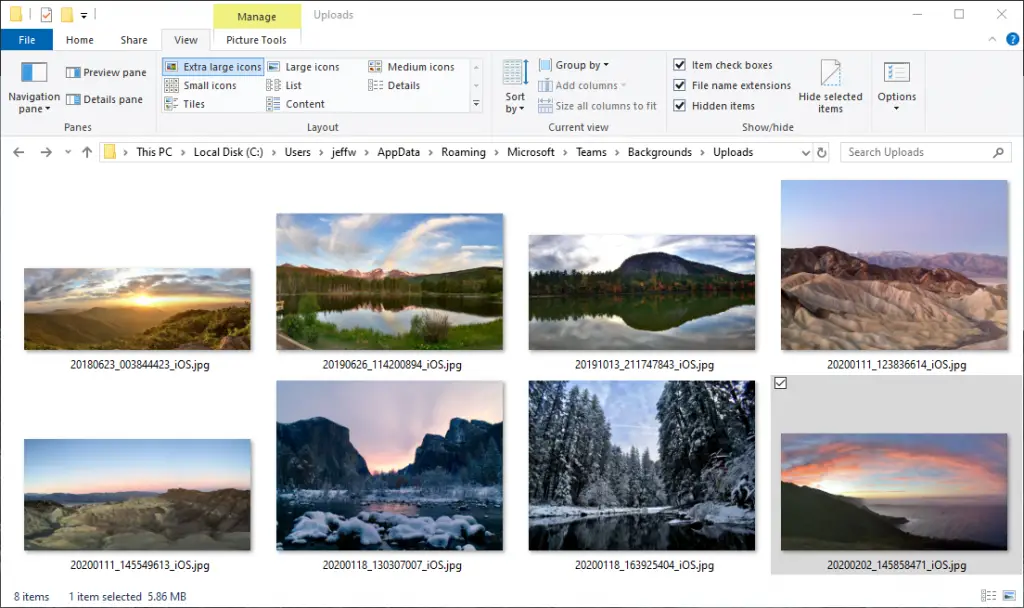
If you are already in a meeting, you can upload your own background image directly to the Microsoft Teams client. In the meeting window, select the 3 dots to bring up additional options, then select Apply background effects. From here, select the + Add new option to browse your system for the image.
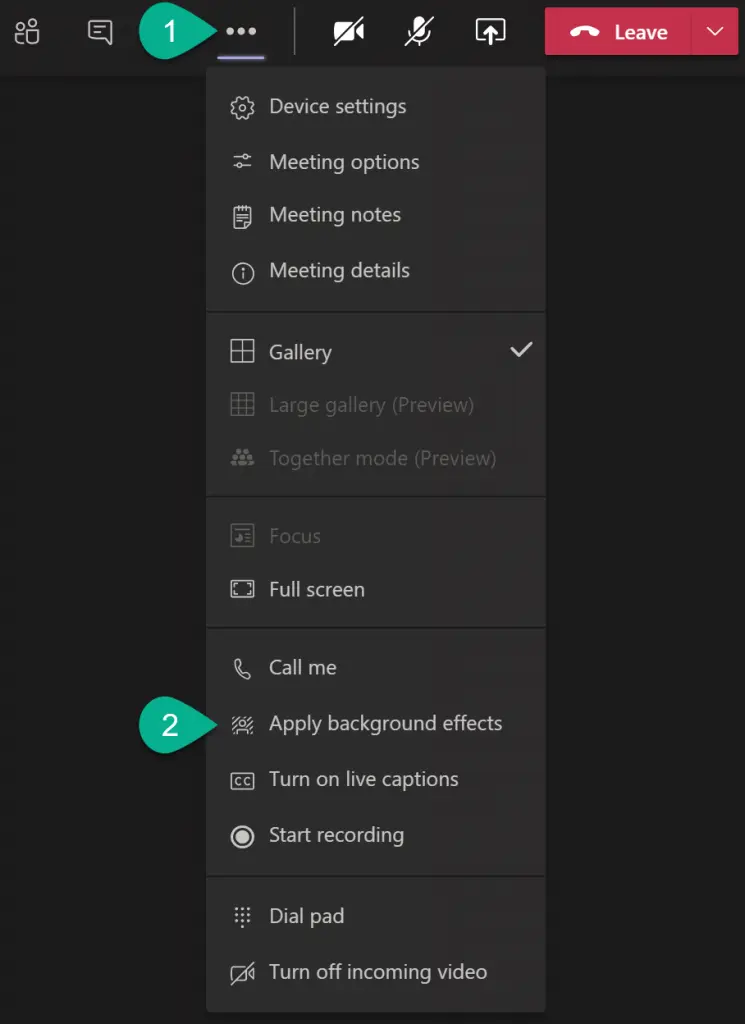
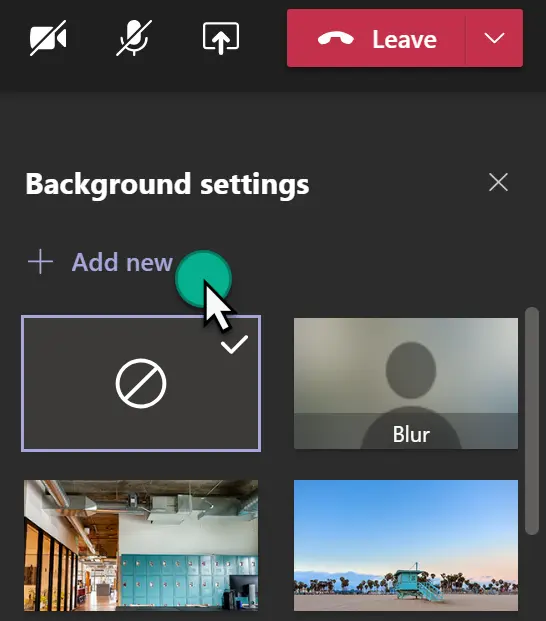
After uploading from the client or placing files in the Uploads folder, my custom images are available at the bottom of the list after the default images (only 6 of my 8 images are displayed in the screenshot but all 8 were available):
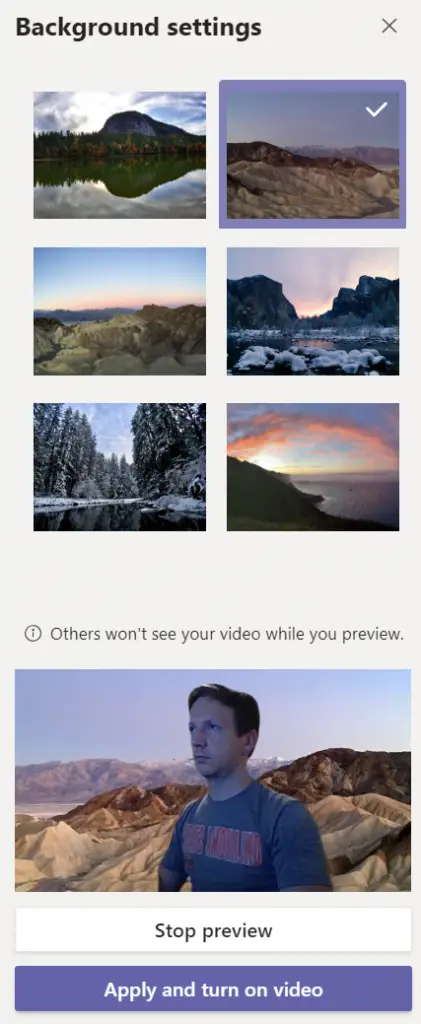
Creating the Meeting Policy
Microsoft Teams meeting policies contain a property named VideoFiltersMode. This property has four options available for values:
- BlurOnly: offer background blur only
- BlurAndDefaultBackgrounds: offer background blur and default-provided images
- AllFilters: All, which includes the ability for Teams to use custom images
- NoFilters: offers no background effects or filters
You can manage the Microsoft Teams background filter using either the Teams admin center or PowerShell.
Teams Admin Center
In the Teams admin center, navigate to your meeting policies in Meetings > Meeting Policies. When creating or modifying an existing meeting policy, you configure the video filter options in the Content Sharing section. Using the drop-down, select one of the four options available.
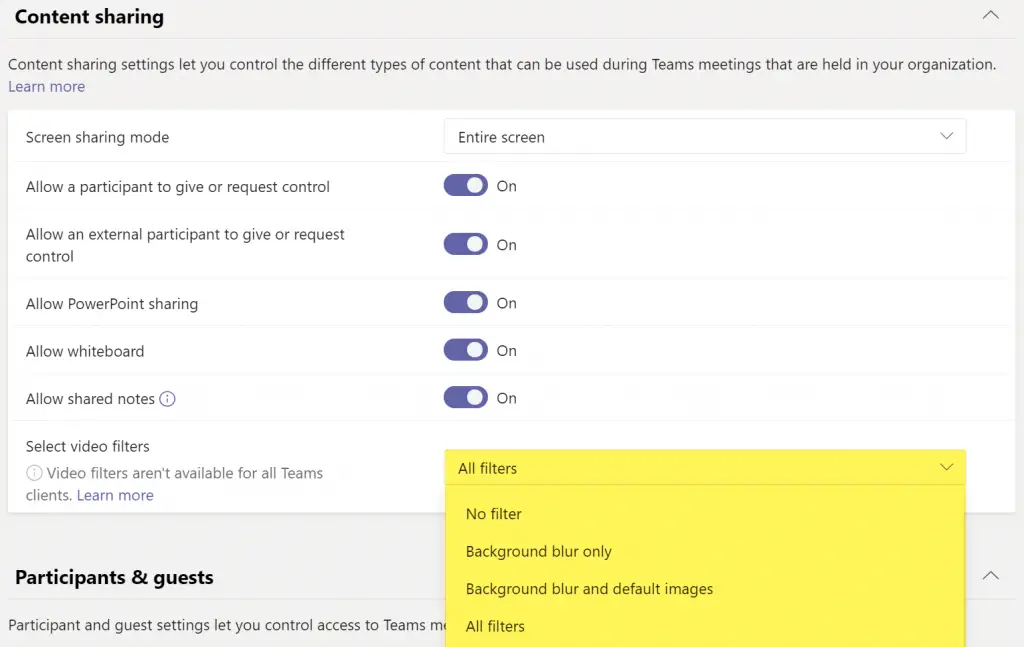
To assign the policy, navigate to Users and find the user to configure. In the user account page, select the Policies tab, then edit the Assigned policies section. From here, you select the meeting policy to assign to the user account. Click Apply.
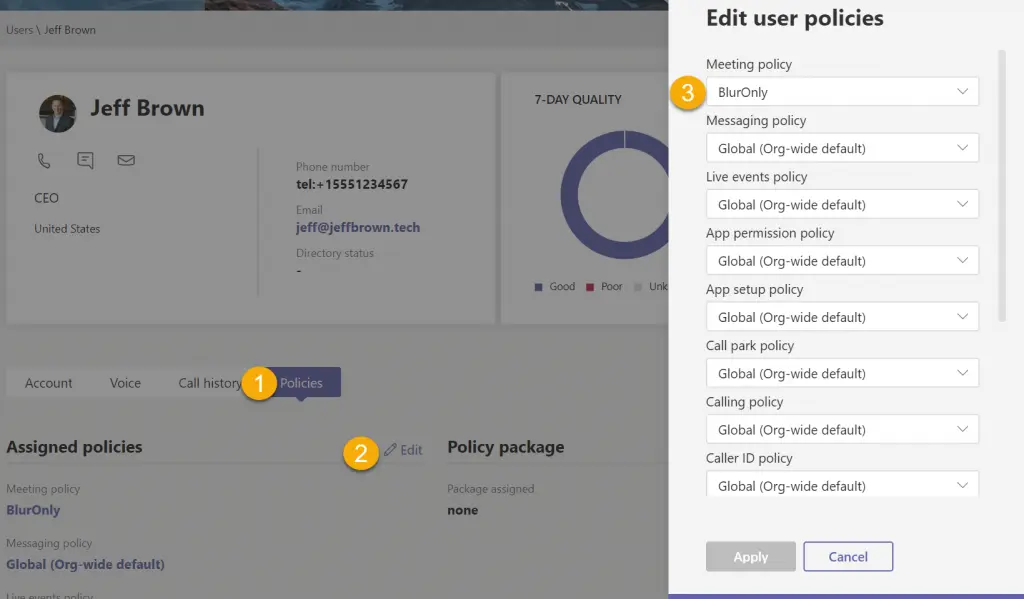
PowerShell
Microsoft recently introduced the capability to connect to Skype for Business Online in the Microsoft Teams PowerShell modules. To learn more, check out my article Exploring New Functionality in the Microsoft Teams PowerShell Module.
For my first meeting policy, I’m going to go with BlurAndDefaultBackgrounds so I can test and see if Teams will ignore my custom backgrounds in the Uploads folder. Let’s create a new meeting policy using the New-CsTeamsMeetingPolicy command:
New-CsTeamsMeetingPolicy `
-Identity BlurAndDefaultEffects `
-VideoFiltersMode BlurAndDefaultBackgrounds
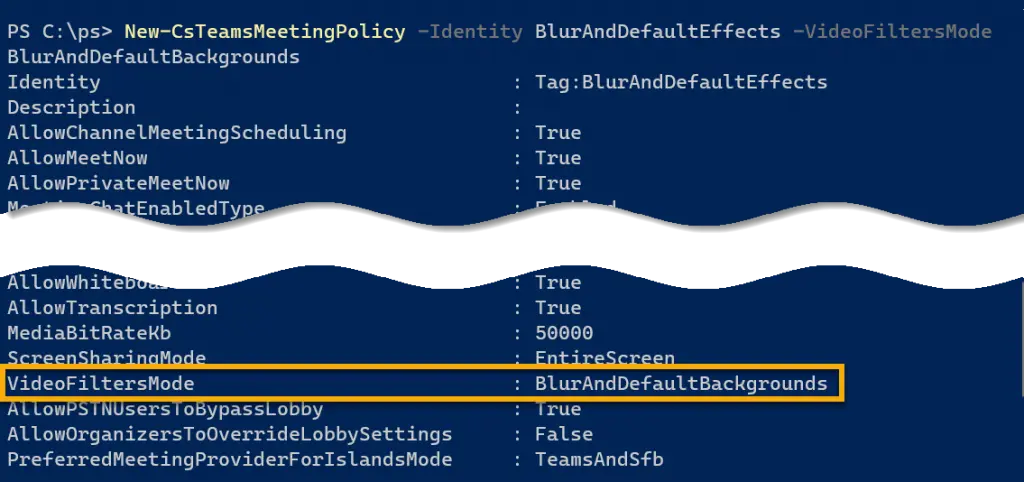
Once the policy is created, I will assign it to my user account using the Grant-CsTeamsMeetingPolicy command:
Grant-CsTeamsMeetingPolicy `
-Identity <user ID> `
-PolicyName BlurAndDefaultEffects

Testing Microsoft Teams Background
After assigning the policy, I waited about one hour to see if the policy had taken effect. So far it did not, so I left it for the rest of the day. Later, I went to enable background effects and my images were no longer available by scrolling to the bottom of the images list:

So somewhere in that 24 hours the policy took effect. This has always been an issue when applying policy changes inside of Microsoft Teams; there is sometimes a significant delay in them taking effect. This is why I suggest configuring the VideoFiltersMode on a new or existing policy now.
Let’s try again with just a blur only policy so default and custom images are both not available.
New-CsTeamsMeetingPolicy `
-Identity BlurOnly `
-VideoFiltersMode BlurOnly
Grant-CsTeamsMeetingPolicy `
-Identity <user ID> `
-PolicyName BlurOnly

This time I checked more frequently for when the policy takes effect. My testing process is to test the policy, and if it isn’t taking effect, sign out and exit the client. After trying this every now and then for about 2 hours, the policy took effect. When I got to enable background effects in a meeting, only the blur option is available.
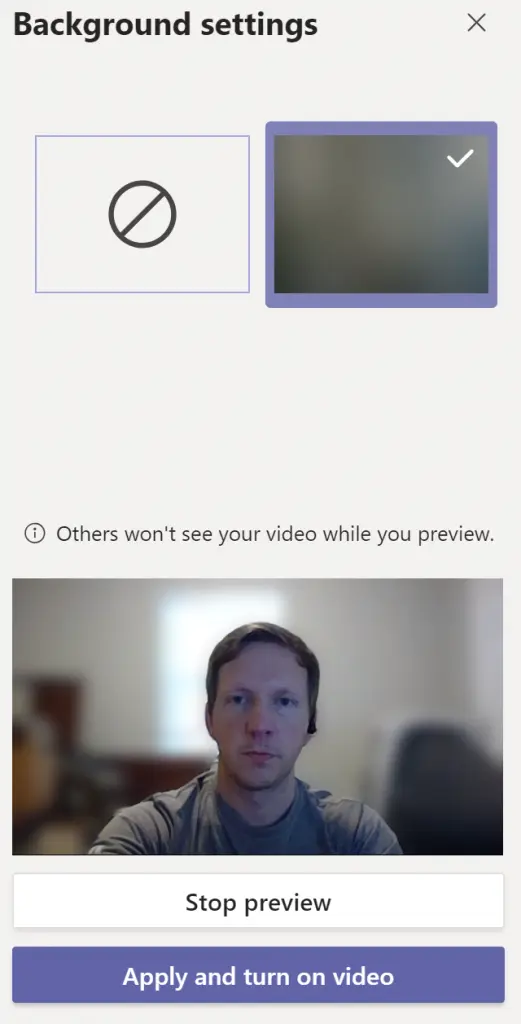
Summary
Having governance over Microsoft Teams background images and filters is often a must for many organizations. Microsoft now provides multiple options for managing these video filters for your organization.
Questions or comments? If so, drop me a note below or find me on Twitter or LinkedIn to discuss further.